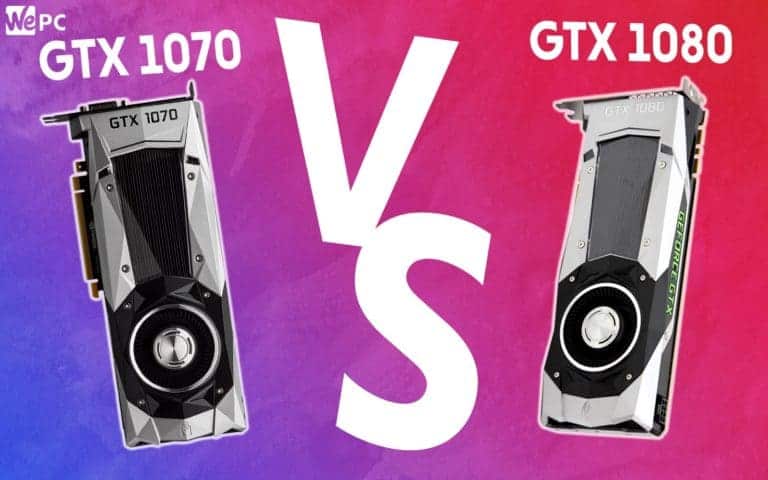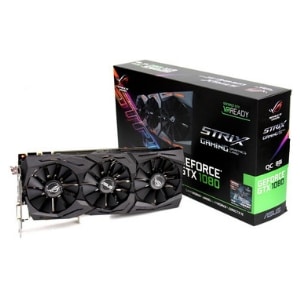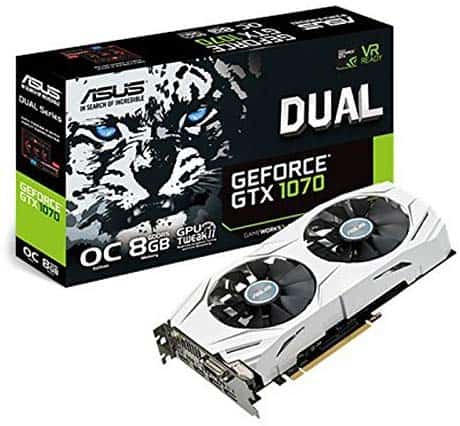
If you’re an Nvidia gamer through and through, but you can’t quite warrant striking out for Super, Ti, or an RTX card with all those shiny RT and Tensor cores just yet, Your best bet is either the GTX 1070 or 1080.
While competitive gamer and GPU enthusiasts have likely moved on to greener ray-traced pastures of newer models, The 1070 and 80 are both still favorites of 1080p gamers the world over. Their enduring popularity is highlighted by their very steady decline in price over the years even in the advent of the RTX 30-Series. But which one is right for you? Is the performative difference between them worth your hard-earned cash? Let’s find out!
Architecture
Before the release of the 1080 Ti, the GTX 1080 was the pinnacle of Pascal microarchitecture featuring marked improvements over the previous design, Maxwell, including high bandwidths that trebled overall memory efficiency. Built using the GP104-400-A1 variant, the 1080 features 2560 CUDA cores (or shading units), 160 texture units, 64 render units, 20 SMs, 7.2 billion transistors, a 48KB (per SM) L1 cache, and a 2MB L2 cache.
The 1070 was built using the GP104-200-A1 variant of Pascal architecture, and considering the price difference between these cards, you may be surprised to hear how similar these variants really are. The 1070 does fall short in areas such as core-count, boasting 1920 – 640 fewer than its superior, 5 fewer SMs, and with 120 in total, it’s 40 behind on texture units, but that’s where the disparity ends. The 1070 goes toe to toe with the 1080 in terms of render output units, transistor-count, and both L1 and L2 caches, so theoretically, these GPUs should have incredibly similar pixel rates.
When we check out clock speeds, the 1080 is back on form, peacocking its superiority with a base rate of 1607MHz to the 1070’s 1506MHz, and a boosted rate of 1733MHz to the 1070’s 1683MHz. This means that you’ll get more headroom for overclocking in the 1080, but the wider clock speed range of the 1070 may provide a more dynamic performance.
Cooling
Pulling 180 watts (1080) and 150 watts (1070), both of these GPUs are known to hit maximum temperatures in the early 80s under load but don’t sweat it. With a shared 94°C thermal capacity, they can definitely handle it. These highs are registered with cooling settings on automatic, so engaging in some user-defined tweaking can reduce those temperatures a little and help them settle nicely into your case.
You’ll most likely find blower editions of these cards, which is great if you want to protect your case’s other inhabitants, but if you’re interested in a lower GPU temp and have a great positive pressure setup, it might be worth your while to shop around for axial iterations.
While both of these cards will benefit from a decent custom loop if you plan on really pushing them with some high-grade overclocking, it’s hard to say whether investing in one would make much fiscal sense. For the price of either of these GPUs as well as water cooling, you’d be well on your way to affording an awesome RTX card.
Dimensions
There are instances where neighboring cards in a GPU family are distinctly different sizes, but it’s not a ‘why don’t you go and pick on some GPU your own size’ situation in this vs showdown.
Measuring 4.376” (H) x 10.5” (L) x 2-slot (W), the GTX 1080 and 1070 are identical in size. They’re both pretty big, but you still won’t need a full tower to house them. If you have a particularly small case, they may get in the way of other peripherals, so a slight upscaling may be on the cards.
Resolutions and Frames Per Second
Let’s get down to brass tax and explore just how different these cards are in terms of honest-to-goodness gaming power.
1080p
Despite their curious architectural similarities, the 1080 does offer significantly better performance in 1080p in ultra settings. For fairly GPU-heavy games such as GTA V, it holds averages above the 100fps mark, a 20% faster performance overall than the 1070 that lingers in the high 80s. The 1080 also maintains 19-20% frame rate wins during titles such as PUBG, Fortnite, and Overwatch.
Though it doesn’t claim the 1080p arena, the 1070 holds its head well above the 100fps mark for most games, so it’s still a contender. In fact, many might consider the 1080 overkill for 1080p gaming.
1440p
Of course, the 1080 was bound to take the 1440p title as well, achieving averages of around the 80fps mark, a 15% win, but once again, the 1070 performs admirably. Breaching the 60fps mark, it’s prime for some quality 1440p gaming in ultra settings.
4K
4K is somewhat of a challenge for 1070. Its averages are known to fall below 30fps during demanding games, which unfortunately means that faster-paced games have a noticeable judder and are pretty much unplayable. For GPU-friendly games, it holds the 40fps mark, but the 1080 rarely ever averages below 48fps.
Ray Tracing
It’s a darn shame, but no GTX card was gifted the superpower that is hardware ray tracing, not even the 16-Series built using Turing architecture. They just don’t have the cores for it, but if you really want a little taste of the magic, you can turn on software ray tracing for GTX cards in games that support it. It won’t be as impressive. You won’t sit there weeping at the sun setting behind Mount Hagen in RDR II or giggle at the play of reflections in the puddles of a moon-blanched Novigrad alley in The Witcher 3…but it’s something at least. Do bear in mind, though, that the RT workload will reduce your frame rates.
VRAM
Both cards have a respectable 8GB of VRAM, but the overarching defining factor between them is the memory type. The 2070 features a standard GDDR5 memory buffer, which is perfectly fine, but the 1080 has the augmented GDDR5X buffer. GDDR5X has three-speed tiers as opposed to GDDR5’s dual-tier slow-fast tier system. The third GDDR5X tier facilitates extra fast memory performance.
Apart from sharing that 8GB capacity and the same 256-bit bus interface, their memory configurations continue to fork. The 1080 has 320.3GBps bandwidth where the 1070 has only 256.3GBps bandwidth, and despite the 1070 having the higher memory frequency of 2002MHz, with 10GBps effective speeds, the 1080 is 2GBps faster than the 1070.
Verdict
No shocking revelations here, folks. The GTX 1080 is better than the GTX 1070 for gaming, proving that no matter how strange the world has become as of late, we haven’t entered some bizarro backward GPU territory just yet. The question is…is the 1080 worth it?
The price difference between these cards can sometimes be in the region of $200, and if that’s the case, we’d recommend choosing the 1070 any day of the week. It offers 100+ frames per second for most titles in 1080p, and for graphically demanding games, its averages only drop around 15-20fps. What’s more, it holds a 60fps average for 1440p gaming in ultra settings, and that’s really all you need.
If, on the other hand, you can find a decent secondhand or new GTX 1080 for $20-$50 more than the 1070 you have your heart on, it’s certainly more of an attractive prospect, especially if you’re interested in 4K and VR gaming.




